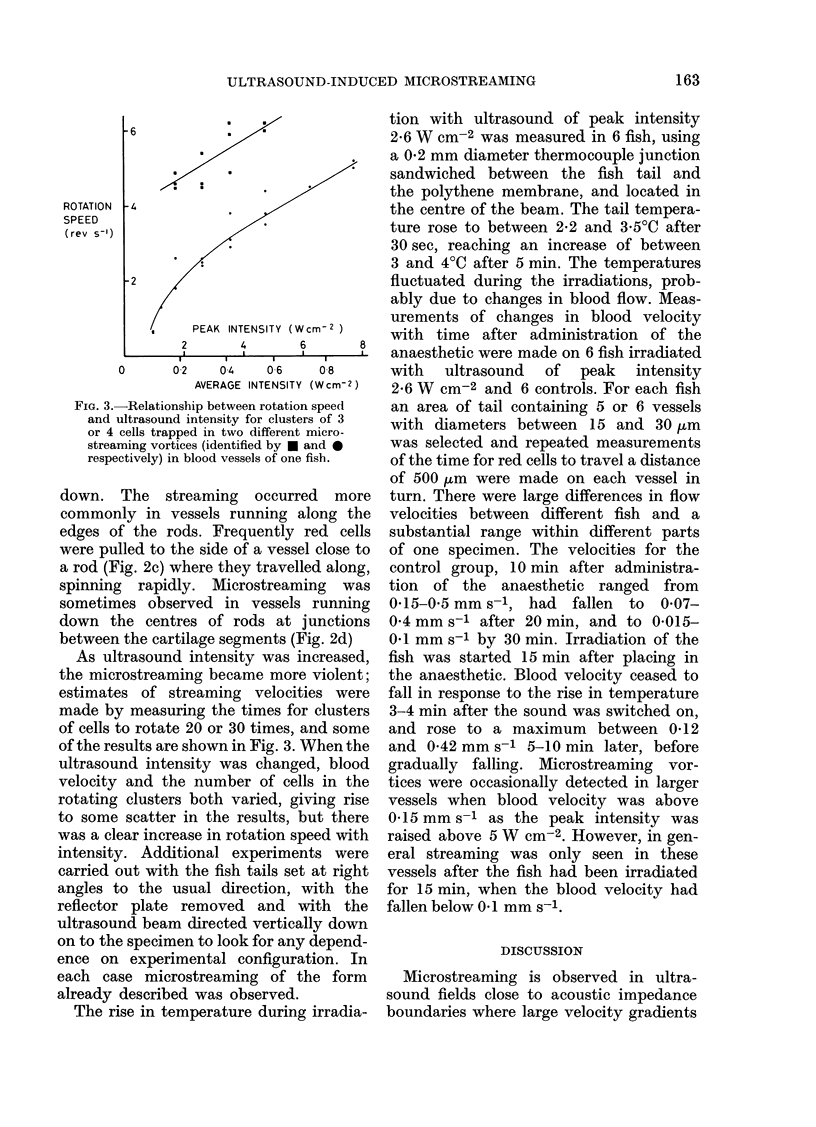Abstract
Tails of the tropical fish Xiphophorous maculatus have been studied by light microscopy during irradiation with continuous wave 780 kHz ultrasound. Acoustically-induced microstreaming was observed in blood vessels during irradiation with peak intensities above 1 Wcm-2. The microstreaming took the form of rotation of single blood cells and clusters of a few cells and occurred at positions close to the edges of cartilage rods supporting the tail. Streaming was detected initially in vessels 5-10 micrometers across where it impeded blood flow, and as the blood velocity fell it was also observed in larger vessels 15-30 micrometers across. Measurements of rotation speed showed that streaming velocity increased with intensity. The microstreaming is thought to result from radiation torque created by the complex standing wave field produced by reflection from the irradiation tank window and the cartilage rods, or by vibration of the rods in the sound field.
Full text
PDF



Selected References
These references are in PubMed. This may not be the complete list of references from this article.
- Martin C. J., Gemmell H. G. A study of ultrasonically induced pulsations of gas-filled channels in Elodea. Phys Med Biol. 1979 May;24(3):600–612. doi: 10.1088/0031-9155/24/3/011. [DOI] [PubMed] [Google Scholar]
- Williams A. R. Intravascular mural thrombi produced by acoustic microstreaming. Ultrasound Med Biol. 1977;3(2-3):191–203. doi: 10.1016/0301-5629(77)90071-0. [DOI] [PubMed] [Google Scholar]


